The cannabis cowboys are going corporate
Two short years ago, the cannabis industry was frothy with cash. In 2018, US venture capital investment in cannabis companies topped $900 million, and the combined value of roughly 200 merger and acquisition deals was more than $15 billion—more than a third of which came from tobacco and alcohol companies. The moment was often compared to the dot-com bubble of the 1990s—as was the bust that followed. Cowboys with ample cash and minimal expertise built a house of cards with questionable business models amidst rapidly evolving regulations. It soon came crashing down.


Two short years ago, the cannabis industry was frothy with cash. In 2018, US venture capital investment in cannabis companies topped $900 million, and the combined value of roughly 200 merger and acquisition deals was more than $15 billion—more than a third of which came from tobacco and alcohol companies. The moment was often compared to the dot-com bubble of the 1990s—as was the bust that followed. Cowboys with ample cash and minimal expertise built a house of cards with questionable business models amidst rapidly evolving regulations. It soon came crashing down.
Perhaps the most visibly catastrophic was MedMen, the self-described “Apple store of cannabis” which instead became the “WeWork of weed,” losing 95% of its market value amidst allegations of stock manipulation, bank fraud, labor law violations, and bigotry—and a side of schadenfreude, given its flashy rise.
By the end of 2019, the value of the leading 45 North American cannabis stocks tumbled nearly 70% from their peak in January of 2018. Now, as those cannabis companies left standing struggle to recover, it’s time for them to start building sustainable businesses that can withstand the economic and social demands of 2020 and beyond.
The opportunity is significant. While the coronavirus shuttered businesses across the US in March and April, many states deemed cannabis dispensaries “essential,” and sales figures reflected the fact that many Americans see it that way, too.
In the months since, protests against racist policing and a rising awareness of racial inequality have highlighted the role US companies can play in dismantling white supremacy. Activists argue that by reducing confrontations between officers and citizens, cannabis legalization could greatly cut down on police brutality.
There’s another benefit to legalization: additional tax revenue for states and cities reeling from Covid-19-induced shortfalls. If the moral and medical arguments were insufficient in persuading some lawmakers, the economic incentive might prove more effective—not unlike the repeal of alcohol prohibition following the Great Depression.
“This is such a critical time in cannabis,” says Chris Melillo, who heads up retail operations for Curaleaf, arguably the biggest operator in the US weed business. “It will be an inflection point for the future on how it operates and how it will continue to operate … You’re at the forefront of starting an industry and a company at the same time.”
That industry is projected to be worth some $47 billion by 2025, nearly 75% of which is expected to come from the US market. As public opinion shifts, new policies are written, and more states opt for legalization, these leaders have the opportunity—and many would argue, the responsibility given the plant’s racially fraught history—to build a multibillion-dollar industry more equitable and accessible than any currently represented on Wall Street. But it won’t just happen by accident.
“This is an industry that will be structured by law,” says Matt Stoller, the author of Goliath: The 100-Year War Between Monopoly Power and Democracy. “Not just whether the drug becomes legal or not, but also how that sales process and distribution process and production process work.”
Whether or not cannabis becomes federally legal, of course, is still a huge variable. Despite support from about two-thirds of Americans, presumptive Democratic presidential nominee Joe Biden doesn’t support federal legalization, citing public health concerns. And though some predicted president Trump may change his anti-cannabis stance to win votes in 2020, he hasn’t yet.
In the meantime, lawmakers, voters, advocates, investors, corporations, and entrepreneurs are shaping the legal US cannabis industry, state by state. The decisions they make will determine not only whether the future of US cannabis is run by a handful of corporations, but also the quality, accessibility, and safety of the products.
Cannabis sits at a unique intersection of medicine, agriculture, consumer packaged goods, food, beverages, and recreation. What might a great modern cannabis industry look like? And how might it be prevented from exacerbating the inequality and exploitation already rampant in American capitalism?

Table of contents
US cannabis today | The alcohol analogy | MSOs in the USA | Big Weed, meet Big Alcohol | Do not pass Go | Designing for micro-weed | It starts with supply | The case for reparations | Going global
US cannabis today: a snapshot
First, a quick primer. The cannabis plant is an annual flowering herb that loves the sun and can easily grow to twice a person’s height. The flowers of female plants, which contain the largest concentration of cannabinoids—think THC to get you high, CBD to chill you out, CBN to encourage a snooze—are particularly treasured, but the plant’s resins and fibers are valuable too. There are countless cultivars of cannabis, commonly called strains, and in the US, those containing less than 0.3% THC are referred to as industrial hemp. People use the plant, as they have for centuries, for all sorts of physical, mental, and spiritual relief.
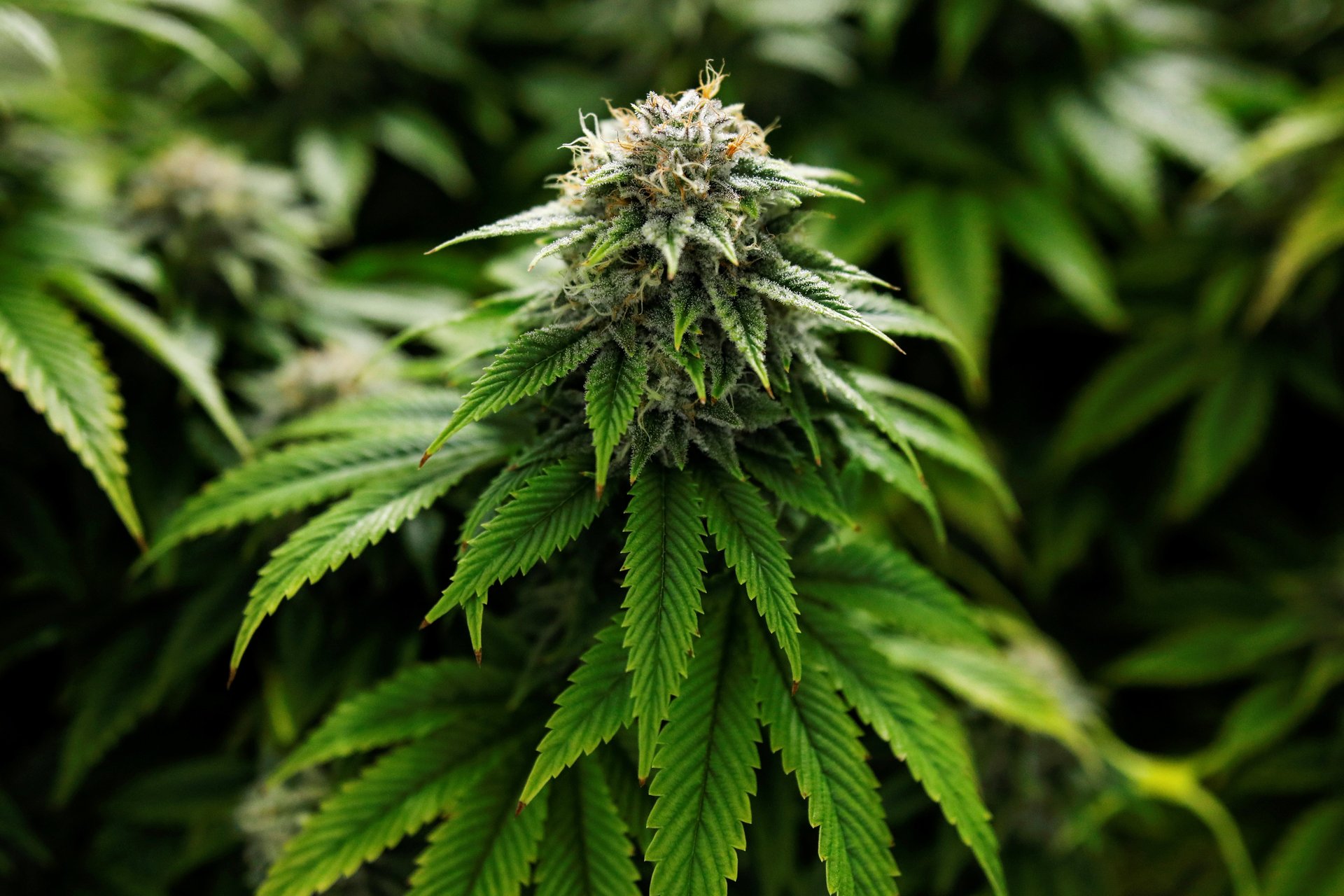
For as long as cannabis remains on Schedule I of the Controlled Substances Act, it’s also illegal to grow, sell, or possess it under federal law in the US. So when we talk about the “legal” cannabis industry in the US, we’re really talking about a patchwork of state-regulated businesses, including cultivation (ie: plants growing in the ground, greenhouses, and warehouses), testing, processing, transport, and retail. Public approval of cannabis use is growing fast and some 33 states and Washington, DC currently allow for some form of medical use, while another 11 also have recreational or “adult use” programs. Consumers from California to Maine can buy weed in tea bags, tinctures, concentrates, candies, vapes, pre-rolls, salves, and more—not to mention countless cultivars of good old buds, now commonly known as “flower.”
For a patient or customer living in one of those states, legal cannabis consumption might feel somewhat simple, if expensive. Even before Covid-19, some states allowed for cannabis delivery, and since the pandemic began, many added curbside pickup to their services. But for US cannabis companies, the industry’s regulatory framework is a labyrinth of conflicting and overlapping laws, loopholes, and requirements. For those that can jump through these flaming hoops without getting burned, the opportunity is major: A regulated market worth $12.4 billion in 2019, and an illicit market worth many billions more. One of the industry’s main challenges is to create a regulated industry to rival the booming illegal one. The US’s biggest cannabis market, California, is famously failing to do so.
What was predicted to be a $643 million windfall for California’s tax coffers in 2018 following the passage of Proposition 64, which legalized the sale of recreational cannabis, instead added up to just over half that sum. Stringent new packaging requirements, hiked-up taxes, widespread municipal bans, and tediously slow licensing for new businesses were all to blame for the disappointing sales. Meanwhile, for many consumers, buying weed on the unregulated illicit, or “legacy,” market was as cheap and easy as it had ever been.
“Until [cannabis] is easy to access and there’s price stability in the legal market, we’re going to have two markets,” says Andrew DeAngelo, who is familiar with both of those markets. He spent decades moving cannabis around the globe illegally before co-founding Harborside—an institution amongst California dispensaries—with his brother Steve in 2006.
DeAngelo exited Harborside when the company went public on the Canadian Stock Exchange last year. Today a consultant, activist, and the cofounder of the nonprofit The Last Prisoner Project, he is one of many outspoken critics of Proposition 64, which he—along with many others—blames for waves of extinction among California’s medical cannabis businesses, as well as untenable barriers to entry for entrepreneurs and excessive taxes for consumers.
“We’ve gotten the frameworks and the tax structures totally wrong,” says DeAngelo, adding that the illicit market did a pretty good job of creating stable prices and relatively easy access for the last several decades.
“The finest California sensimilla in the legacy market is $40-60 an eighth [of an ounce], depending on how close you are to the person who grew it. If you go into Harborside, it’s $110-130,” says DeAngelo. “Consumers don’t do that—not when they’ve been able to access weed at stable prices for 50 years, or 30 years at least.”
In other words, it’s the economy, stupid.
Of course, an illicit market will persist for as long as federal prohibition does. When pot prices dove in Washington state due to overproduction in 2018, a farmer could easily triple or quadruple their price by shipping illegally across state lines. And even in those states where weed is legal, many municipalities still ban sales, giving rise to a “grey” market, where dispensaries and delivery services operate without adhering to the same costly regulations as their competitors. It’s no coincidence that when California’s legal cannabis prices jumped with the passage of Prop 64—sometimes as much as 100%, because of higher tax rates and the costs of compliance—sales and profit margins took a dive. In states such as Oregon and Washington, which are better-established recreational markets with lower prices, the illicit market isn’t quite so aggressive a competitor.
The dangers of that booming unregulated market came into clear focus last year, when a mysterious lung illness emerged across the US. EVALI, or e-cigarette or vaping use-associated lung injury, might seem quaint by today’s coronavirus-clouded standards, but the outbreak resulted in more than 2,800 hospitalizations and nearly 70 deaths. The main culprit was found to be illegal THC vape pens that contained Vitamin E acetate—an additive considered safe for skincare but not for inhalation—that unregulated manufacturers were using as a cutting agent to expand and thicken the quantity of pricey THC distillate, both to save money and to enhance the oil’s appearance.
“It’s bathtub gin,” says DeAngelo, of the vape crisis. “How did we get rid of bathtub gin? We ended alcohol prohibition!”

The alcohol analogy
Many in the industry find the analogy useful. Vivien Azer, a managing director at the financial firm Cowen and Company who covers the beverage, tobacco, and cannabis sectors, agrees alcohol might contain some clues as to where the cannabis industry is headed.
“I think [cannabis] will ultimately probably look not that dissimilar to the beer industry, where you’ve got your big three or four which control the landscape nationally,” says Azer. “But then you’ve got thousands of regional and local brands that play well in their own markets, but don’t necessarily have the right to win nationally.”
Four companies presently control more than 85% of the US beer market—and AB InBev, the maker of Budweiser and Stella Artois controls almost half the total market share single handedly. Cannabis isn’t there, at least not yet.
Azer calls US cannabis’s current state of affairs a “large organized oligopoly with concentration in terms of regional strength.” The regional emphasis is because cannabis companies are prohibited from selling their products across state lines, meaning that every state with legalized cannabis has its own siloed market, where operators work within local legal requirements.
The federal prohibition on interstate commerce impedes all sorts of supply-chain efficiencies, such as plant-friendly microclimates or plain old economies of scale. It’s one more hurdle for businesses like Harborside, along with restrictions on access to banking and US stock markets. But these inefficiencies have, to some extent, protected them from larger competitors, despite money from alcohol, tobacco, and pharmaceutical companies flowing in.
That’s one reason Department of Justice whistleblower John Elias raised eyebrows in June when he testified that attorney general William Barr ordered investigations of 10 cannabis mergers in the 2019 fiscal year—accounting for 29% of the antitrust division’s full merger investigations during that period. Barr’s outsize focus on weed mergers was based on the attorney general’s personal dislike of the industry, rather than sound antitrust analysis, Elias alleged.
While many insiders agree there’s a risk of Big Weed taking over, none that I spoke with saw any current risk of a US monopoly—at least not yet.
“What you have is 34 mini-economies of cannabis,” says David Feldman, a New York-based attorney who works with cannabis companies on mergers and acquisitions. “Even if you’re a multi-state operator, everything you do in one state has to stay in that state. So you’ve got to grow it, process it, and sell it all there. You can’t ship it out of state.”
Those multi-state operators—known in industry parlance as MSOs—are amongst the most powerful players in US cannabis, and they are positioning their businesses for the day when those 34 (and rising) mini-economies become a single mega-economy.

MSOs in the USA
While MedMen was snapping up real estate and throwing parties with politicians, showgirls, and celebrities in midtown Manhattan, Las Vegas, and Venice Beach, another MSO was more stealthily expanding its footprint.
Curaleaf is headquartered in Massachusetts and focuses its operations in markets perhaps less sexy than MedMen’s—think Florida, Arizona, and Illinois—but no less lucrative.
The company began in 2010 as PalliaTech, a medical cannabis company that raised tens of millions from a Russian investment firm between 2013 and 2015 led by Boris Jordan, who made a fortune in data centers and energy in Russia after the fall of the Soviet Union, and is now chair of Curaleaf’s board. The company went public in late 2018 on the Canadian Securities Exchange, and Jordan maintains a sizable ownership stake, according to Barron’s.
“Itʼs just like Russia in the 1990s,” Jordan told Bloomberg in 2017. “Weʼre talking about an industry in its infancy that needs to be built up from scratch, legislation and all.” Curaleaf is also backed by Andrei Blokh, who was president of Sibneft, the oil company Roman Abramovich sold for more than $13 billion following Russia’s privatization.
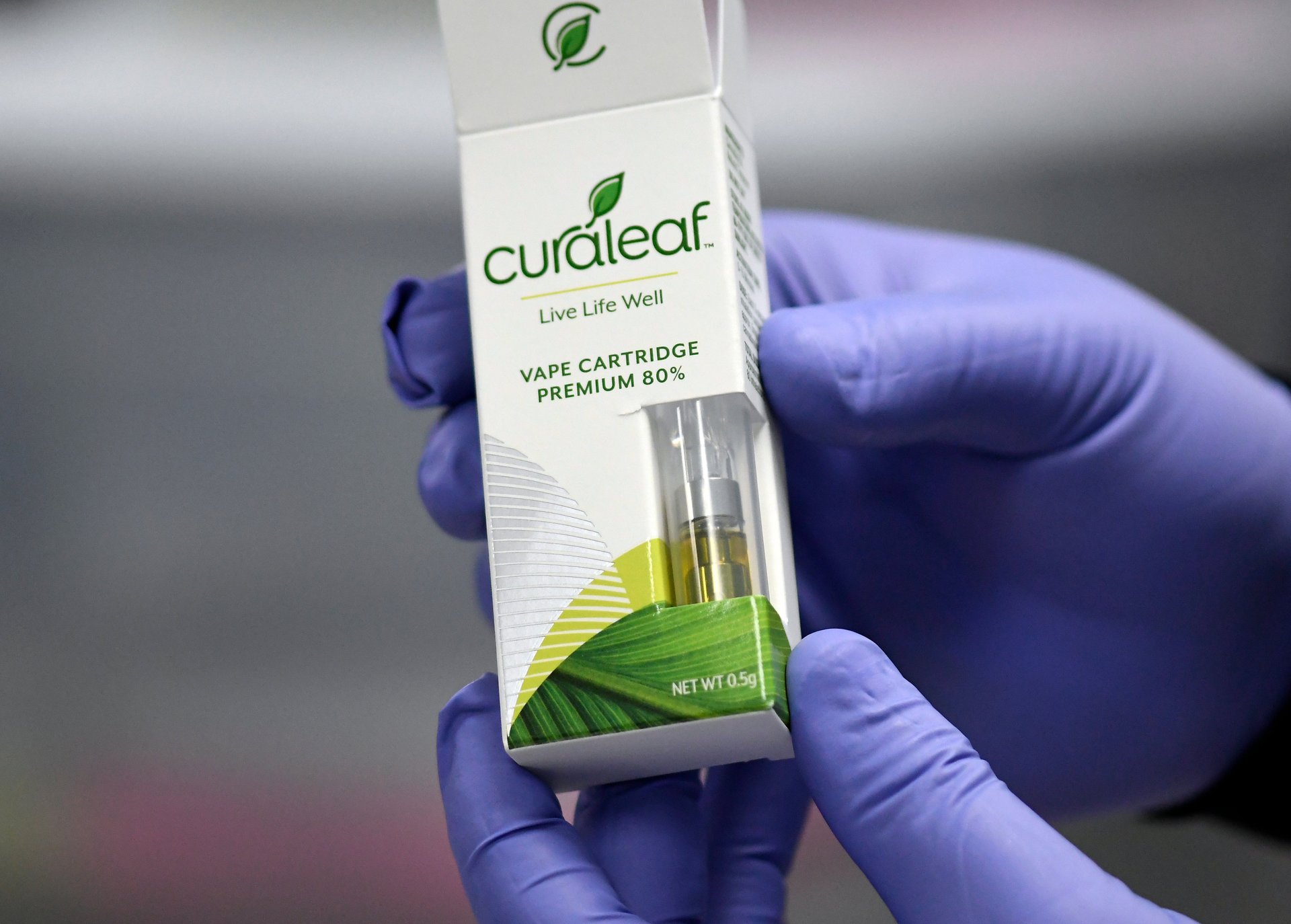
In July of 2019, Curaleaf announced plans to acquire Grassroots Cannabis, a Chicago-based MSO, in a $875 million deal that would give the combined company over 135 dispensary licenses, 30 processing facilities, and 1.6 million square feet of cultivation area over 22 sites, making it arguably the world’s biggest seller of legal cannabis.
That merger, which closed last month, makes Curaleaf the closest thing US cannabis currently has to an AB InBev or Starbucks, although it still controls a sliver of the market shares the beer and coffee giants command. Curaleaf posted $221 million in revenue last year, of an estimated $12.2 billion legal market in the US—so less than 2%.
“Even though they only have 2% of the market, they can still start to use tactics that encourage others to sell out to them, or that allow them to gain more share,” says Stoller. “Now would be the time to prevent monopolization of the industry because once it’s already happened, it’s hard to look back.”
Indeed, Curaleaf—which has acquired not only Grassroots, but also the recreational brand Select, the Denver-based edibles manufacturer BlueKudu, and more key cultivation sites and dispensaries around the country—is poised to keep growing.
Already, when you zoom into valuable states such as Arizona, where the medical market was worth an estimated $730 million in 2019, Curaleaf and another MSO, Harvest Health and Recreation, control one-sixth of the operational dispensaries. Arizona voters are likely to legalize recreational cannabis in November with a ballot initiative that favors those existing dispensaries. Curaleaf and Harvest are the initiative’s major backers, having contributed a combined $1.2 million to the campaign through 2019, Marijuana Business Daily reports.
“I believe we will create the first true national cannabis brand with the widest distribution in the country,” Curaleaf CEO Joe Lusardi told me the week before the Grassroots merger closed, in no uncertain terms.
Curaleaf isn’t alone in such ambitions. When I asked Azer which cannabis companies might step into a AB InBev or Philip Morris-type role in the industry, she rattled off a power trio of Canadian giants all jockeying for the position.
“Canopy Growth, Aurora, Tilray, they’ve all endeavored to be that company,” she said. “They all have international exposure beyond Canada. They’re all working on not just consumer-facing goods but FDA-level clinical research. So they’re focused not just on geographies but also on operational verticals, just like Diageo would think about vodka, scotch, rum, and tequila.”

Big Weed, meet Big Alcohol
Canopy, the largest of those companies by market capitalization, is worth about $7 billion on the New York Stock Exchange. (Because Canadian cannabis companies including Canopy are not breaking federal laws in Canada, they have access to the US stock market. Conversely, their American counterparts, including Curaleaf, often go public on Canadian exchanges.)
Big Alcohol is already in Canopy’s boardroom. Constellation Brands—which makes Corona in the US, and owns brands including Modelo, Svedka vodka, and Robert Mondavi wines—bought a 38% stake in the company in 2018 in a deal that gave Constellation the power to appoint four of Canopy’s seven directors. In 2019, co-founder and former co-CEO Bruce Linton was ousted and has since been replaced by an executive from Constellation’s beer division. And the company already has a blueprint for entering the US once cannabis is federally legalized: a conditional deal to purchase Acreage Holdings, the MSO perhaps best-known for putting John Boehner, the former Speaker of the House once “unalterably opposed” to legalization, on its board.
But what if the US cannabis industry—and its consumers—wanted to discourage the sort of domination enjoyed by the nation’s four beer giants, and instead encourage a richer proliferation of small- and midsize businesses, more microbreweries than Budweisers?
That’s a desirable outcome not only because many drinkers agree it’s nice to choose from a long list of craft-brewed ales, lagers, pilsners, and quirky sours, stouts, and saisons—which is to say, healthy competition is good for innovation and the quality of the product—but also because the alternative is largely undesirable.

Do not pass Go
Stoller readily admits he knows nothing about cannabis, but he knows a lot about monopolies, and says the mechanisms—and reasons—for preventing them are pretty basic, and proven. When consolidation creates competition based on market power rather than quality or price, he says, watch out.
“What you end up having is extractive practices,” says Stoller. “They tend to tend to suppress wages, to suppress the profitability of suppliers, and they often will subvert the political authorities that are intended to regulate them for safety or health reasons. And then it just undermines democracy.”
At present, five companies alone brew more than half of the world’s beer, and about half of that volume belongs to AB InBev alone. Whether you’re drinking a Goose Island, Golden Road, Breckenridge Brewery, or Blue Point—or a Bud, Cusqueña, Bass, Hoegaarden, or Stella—you are enjoying an AB InBev beer. While size brings some market efficiencies, it also has real costs.
Beer mergers have resulted in higher prices. And studies have shown economies where a few players control a single market (also known as monopsonies) result in lower wages, and that those effects may be even more severe in small towns. Over a decade since the company took over Anheuser-Busch, a former HR director teared up remembering the layoffs that followed, which also devastated the city’s once-vital advertising industry. When it merged with SABMiller in 2016, the company estimated it would eliminate about 3% of its workers, amounting to several thousand jobs. The following year, AB InBev announced plans to lay off hundreds of employees in its craft beer division.
What’s more, Stoller says, monopolistic players in the cannabis industry—especially those subject to pressure from investors—could pose unique threats to consumers and the legitimacy of the legalization movement altogether.
Wall Street, with its constant pressure for quarterly growth, creates unhealthy incentives. For example, companies aggressively marketing their products to underage consumers could undermine the respectability of the entire industry, says Stoller, as has happened historically with alcohol and tobacco and more recently with Juul.
His second, related concern is that chain stores will be motivated to create habitual users, as opposed to niche boutique retailers that serve smaller communities. Corporate cannabis could also try to lock customers into their products, whether by requiring certain equipment (such as Keurig-like cannabis vape pods, which are already a thing) or shutting off access to other options.
“It would be funny if they tried to make homemade weed illegal,” says Stoller.
It turns out cannabis companies including Curaleaf and Acreage already tried to convince New York governor Andrew Cuomo to do just that.

Designing for micro-weed
The first step to building a healthy cannabis industry is to break up the layers of the business, says Stoller.
The proliferation of microbreweries bubbling beneath AB InBev’s dominance is not just a happy accident of unregulated capitalism, but rather what Open Markets Institute director Barry Lynn called a “market structure designed to ensure moral balances, one that relies on independent middlemen to limit the reach and power of the giants.”
That structure dates back to alcohol’s post-prohibition era, when lawmakers and voters divided the industry into three separate tiers—producers, wholesalers and distributors, and retailers. If you made the booze, you couldn’t also own the bar that sold it to customers. Eliminating vertical integration made it more difficult for any single player to monopolize the industry, and set the stage for entrepreneurs to cater to niche tastes and markets. Hence, local microbrews.
Washington is the only state where recreational cannabis operators are prohibited from vertically integrating. Daniel Shortt, an attorney focused on cannabis law with Harris Bricken in Seattle, says the effect has been similar to the beer industry, allowing for niche products and smaller retailers to flourish.
“In Washington state, processors can just specialize in what they’re good at,” says Shortt, who is prone to rhapsodizing about the quality of his home state’s cannabis-infused candies. “Starbucks has gotten so massive because it went out and bought the whole line of production, the cups, the coffee, everything. But, is Starbucks a good thing?”
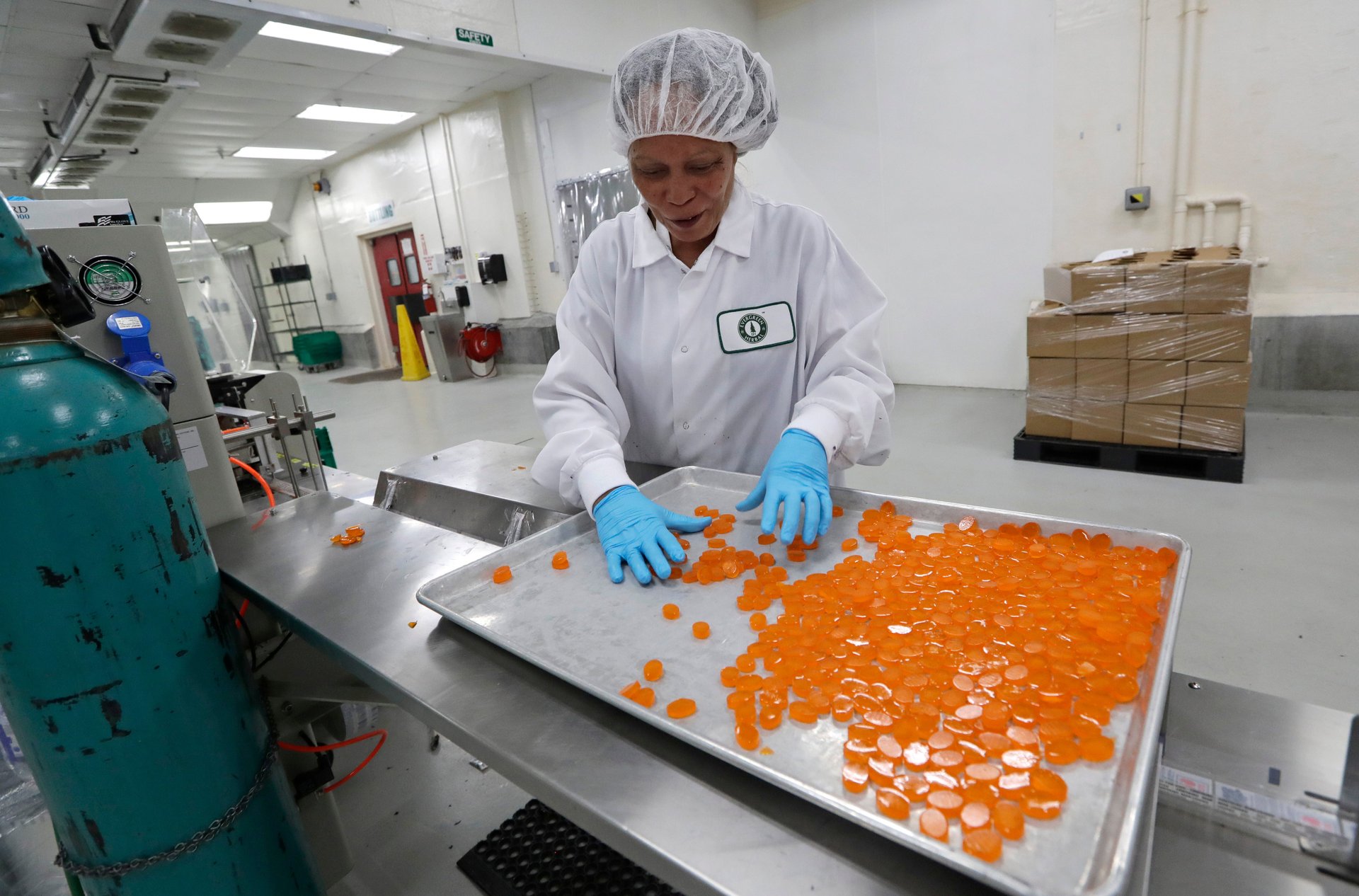
Washington’s structure is unique—and many of the industry’s biggest players, Curaleaf among them, are already vertically integrated—but that doesn’t mean a new law couldn’t force companies to sell off their production, retail, or distribution arms.
“What you need is to have the small producers and store-owners actually advocate for this, for separating the layers,” says Stoller. That’s happened to some extent in the beer industry, where the separation is breaking down as the industry becomes more concentrated, giving the biggest brewers outsize control over distribution.
Stoller says cannabis operators should also beware of “slotting fees,” a practice where retailers charge producers for shelf space that helps explain why certain big brands of products such as ice cream and breakfast cereal are prevalent in chain stores. The Alcohol and Tobacco Tax and Trade Bureau outlaws slotting fees, but they are already taking off in the cannabis world, with producers paying between $500 and $15,000 per month for premium shelf space, according to Marijuana Business Daily. One Bay Area retailer told Weed Week he’d prefer to stock indie products but can’t afford to forgo the fees paid by bigger brands as he struggles to break even.
“That’s a mechanism of having one weed producer box everyone else out of the market—not based on the quality or price—but just based on being willing to pay kickbacks to big distributors or big suppliers,” says Stoller. “Those are basically kickbacks. They should be illegal.”

It starts with supply
Industry insiders will tell you the main mechanism today for quelling market domination, in addition to federal prohibition, is the limited licensing framework—a cap on the number of business licenses issued, sometimes classified by an operator’s size. But that doesn’t always work. In 2018, the research organization Pew found five farms had amassed a collective 579 licenses designated for small growers in California.
Marie Montmarquet, who cofounded MD Farms, a 50,000-square-foot Bay Area growing facility with her brother Allen Hackett in 2014, says cultivation is where consolidation begins.
“The people who have these really large commercial grows are going to control production, period,” she says, predicting a future where a single cultivator could be providing the white-labeled weed contained in the products of countless different brands. “The monopolies will be created by the people allowed to get the most cultivation space in California.”
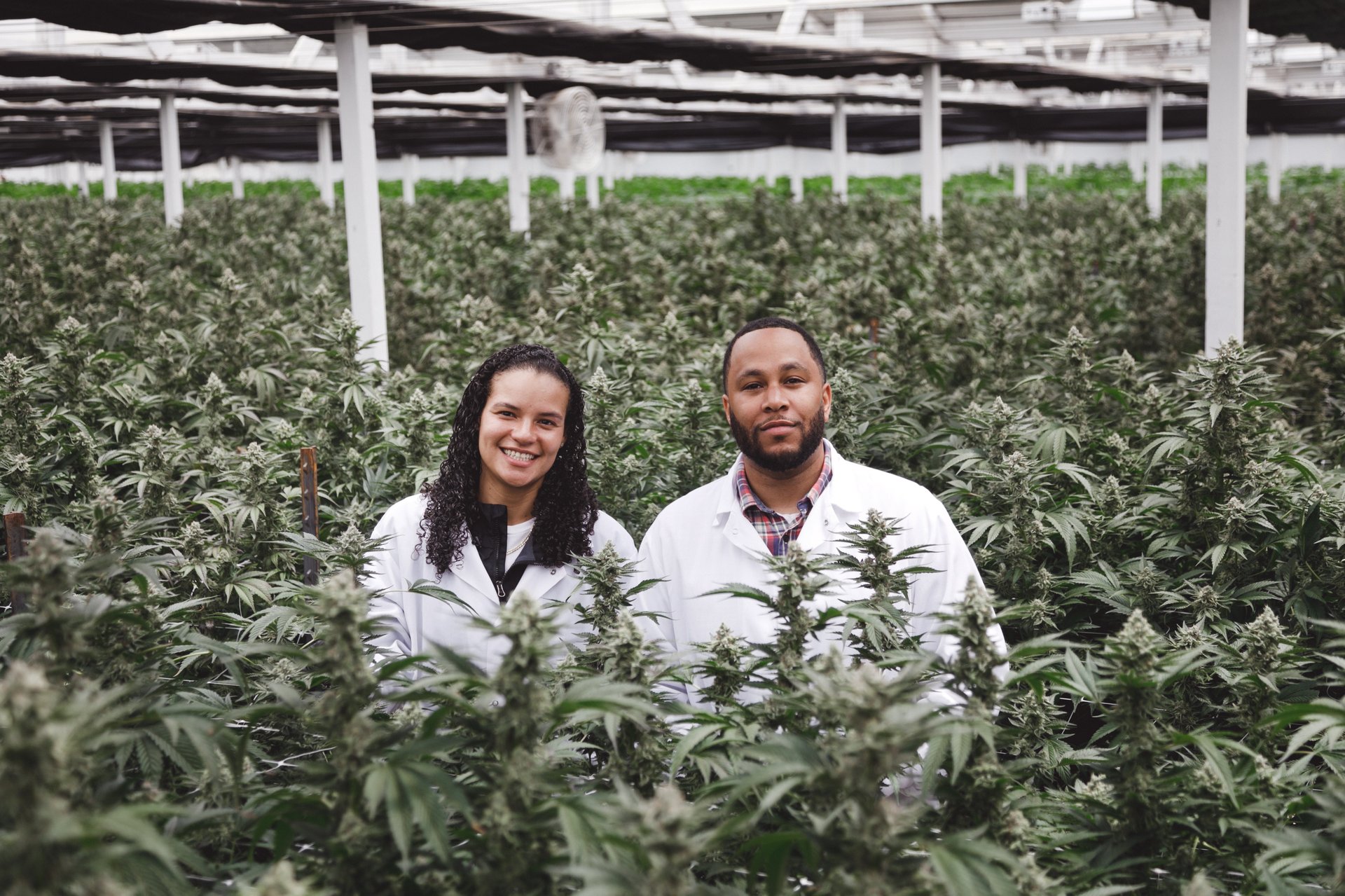
Montmarquet came to California from Nashville, Tennessee, and learned the ropes of the legal industry by working first as a sales representative for a cannabis pill company, then in delivery, and finally finding her way into cultivation. Before that, she sold cannabis on the illicit market in Tennessee.
“I’m definitely fortunate to be alive,” says Montmarquet. “You could have an ounce of weed in the South and you could be risking your life.”
She largely attributes her success in California to hustle, timing, and meticulous book-keeping. Her business license was grandfathered in when Prop 64 passed, and the farm’s landlord was amenable to making the upgrades necessary to stay up to code.
In many ways, Montmarquet is exactly the sort of entrepreneur advocates want to see succeed: She has made the transition from the illicit market to the legal one with a family-run business that is playing by the rules, paying taxes, and, as of last year, turning a profit.
She is also a woman of color, which makes her a rarity among the owners of cannabis companies. No statistical agencies comprehensively track the racial backgrounds of cannabis business owners, but in 2017, Marijuana Business Daily surveyed 389 cannabis businesses and estimated that only around four percent had a Black person with an ownership stake, though not necessarily a controlling one.
Born to a Black mother and a white father, Montmarquet compares her general experience of racism to that of a fish in water—an omnipresence that she takes for granted—but says discrimination has been most apparent in her business dealings when it comes to real estate. She estimates she and Hackett visited three dozen properties, many of which asked for $100,000 deposits for the privilege of renting, before they landed at MD Farms’ current home. (When her delivery service needed a basic office space in Redwood City, Montmarquet was denied so many times she asked her lawyer to write a letter of an endorsement.)
“Real estate is the most blatantly obvious situation where we struggle … And unfortunately, the real estate is everything, because without the real estate: no permit,” she says. “The people that are making money in the industry is a very small group. Once again, we’re creating a very, very small group that consumes all the wealth.”

The case for reparations
Discrimination in real estate, of course, is one of the most powerful and well-documented levers in the US tradition of systemic racism. For decades, redlining allowed white families to acquire generational wealth through real estate while leaving residents of Black neighborhoods ineligible for loans and home ownership, segregating cities, and creating the conditions for poverty-stricken schools.
For the cannabis industry to echo this practice, by excluding people of color from the opportunity to profit from an industry they have been wildly punished by for decades, would be an especially abhorrent and hypocritical chapter in US racism.
Authors including Michelle Alexander and Ta-Nehisi Coates argue that the US war on drugs—the program of drug enforcement and mandatory prison sentencing since the 1960s—picked up where institutionalized racist practices such as Jim Crow and redlining left off. The federal initiative demonized drugs, including cannabis, and those who used them, and helped the US win the world’s highest incarceration rate. Between 1980 and 1989, the arrest rate for drug possession and use nearly doubled. The American Civil Liberties Union (ACLU) reports cannabis arrests still make up some 43% of all drug-related arrests, the vast majority of which are for possession, as opposed to more serious charges such as distribution or sale.
And although surveys show that whites and Blacks use drugs at similar rates, Black people were arrested for drug-related offenses at five times the rate of whites in the late 1980s and early 1990s. A 2017 study by the National Registry of Exonerations (pdf) found that Blacks were five times as likely as whites to go to prison for drug possession. In some places, those statistics are even worse. In 2018, Blacks and Latinos accounted for nearly 90% of arrests (pdf) for cannabis possession in New York City, despite being just 51% of the city’s population. And in every single state, Blacks were likelier than whites to be arrested for cannabis possession. (Florida and Washington, DC did not provide data.)
The twin plagues of racist policing and Covid-19 mean that an encounter with police or a short stay in jail can be a death sentence. Now, the rising movement for racial equality and police reform following the killing of George Floyd brings new urgency to cannabis advocates’ calls for racial justice.
“We’re now at this pivotal moment, this window of opportunity for dramatic police reform,” says Neill Franklin, who has 34 years of experience in law enforcement as a narcotics officer and overseeing education for Baltimore’s Bureau of Drug and Criminal Enforcement. “[Cannabis legalization] is the number one piece of public policy reform that will make the biggest difference right here, right now in police reform, because it will dramatically reduce the contact between police and citizens. And when we do that we’ll have less uses of excessive force and far fewer people dying.”
Franklin is now the executive director of the nonprofit Law Enforcement Action Partnership (LEAP), and was one of many civic leaders who discussed the intersection of racial justice and the cannabis industry at a recent online event held by the Marijuana Policy Project. Leaders from the NAACP, Black churches, non-profit organizations, local governments, and cannabis companies all emphasized the importance not only of ending prohibition, but of increasing opportunities for Black entrepreneurs to get a leg up as the legal industry grows.
“Black folks have caught the brunt of these failed racist policies, and going forward, they need to be at the front of this train with opportunities to own these businesses and to employ people in these businesses,” Franklin says.
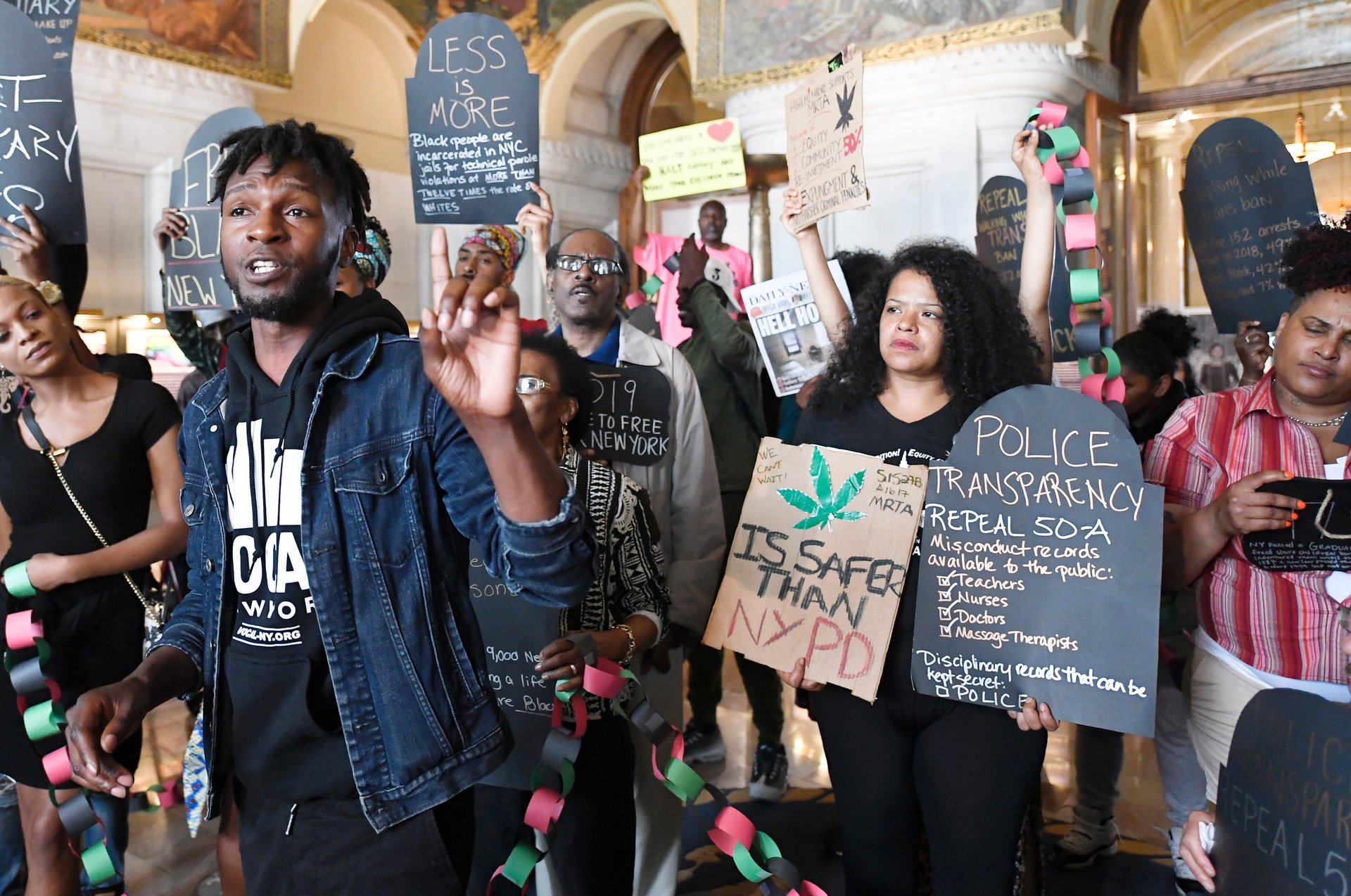
Nonprofits, cannabis companies, and governments are all approaching this systemic problem with different mechanisms, and varying degrees of success.
Organizations such as Code for America, Cage-Free Cannabis, and the Last Prisoner Project all work toward criminal justice, whether by guiding people through the steps of clearing their public records of cannabis-related convictions (a legal process known as expungement) or appealing for clemency for people still in prison for cannabis-related crimes. City and state governments are establishing social equity programs that prioritize applicants of color for business licenses, and earmark tax dollars from cannabis for programs designed to benefit the communities most harshly policed for cannabis—typically those with high Black and brown populations.
Some of these programs—perhaps most notably in Los Angeles—have had slow and rocky starts. That program was launched in 2018, but was recently all but scrapped and rewritten after holding 100 winners of retail licenses in limbo for almost a year, many paying rent on property with no income to show for it.
Advocates in Los Angeles and across the country are also concerned that tax dollars intended for reparatory justice are instead funding police departments—often a concession to get laws like Prop 64 passed. Many hope that subsequent cities and states will make reparatory justice, whether in the forms of expungement, community centers, childcare, or business loans and licenses, more integral to their policies.
During the Marijuana Policy Project event, criminal justice advocate Nkechi Taifa pointed to Evanston, Illinois—a community impacted by redlining where cannabis tax dollars will help fund direct housing payments for Black residents who lived there between 1919 and 1969, and their descendants—as a model for “the kind of creativity we need.”

Going global
While the states-centric status of cannabis policy gives towns like Evanston the power to write their own rules, federal legalization could easily create changes even more dramatic than the small business decimation and price hikes that California experienced with Prop 64.
As Cowen’s Azer said, Canada’s biggest companies are already jockeying to be umbrellas for global brands of various cannabis products, not unlike the spirits giant Diageo. They’ve all also made inroads to the US market, whether via conditional deals like Canopy’s aforementioned merger with Acreage, or the CBD market which gives them access to US retailers by selling products with less than 0.3% THC. (Canopy will also soon be offering Martha Stewart’s CBD line, “specially formulated with guidance from Martha herself,” in the US.)
One of Canada’s leading medical cannabis producers, Tilray, is already in Whole Foods thanks to its $317 million acquisition of the health food company Manitoba Harvest, which sells hemp seeds, oils, snack bars, and smoothie mixes.
Some large corporations have already made investments in Canadian cannabis companies—Marlboro-maker Altria’s $1.8 billion in Cronos among them—and more are standing by for US legalization. Even Coca-Cola has reportedly explored the CBD market, and eyed deals with possible collaborators from the cannabis world. So it stands to reason that cannabis companies spent the few years leading up to last year’s bubble worrying more about volume and market share than profits; they were posing themselves as acquisition targets rather than sustainable businesses.
Which all begs the question of whether cannabis might eventually end up looking a little bit like Coke, where bottling facilities the world over brew soda from a global supply chain of ingredients. Or maybe coffee, where roasters process beans grown in the parts of the world with the most conducive climates and cheapest labor. CBD could provide some clues. China’s Yunnan province—one of the country’s poorest—has already invested about $70 million to help make state-run hemp cultivation a backbone for its local economy.
Could legal weed turn into a global commodity, like coffee or cotton, grown cheaply in hot latitudes and shipped around the world? In a word, yes, Curaleaf’s Lusardi says.
“I think you’ll see some cannabis that’s used simply as feed-stock for manufactured products, that could be grown in South America or the place with the lowest possible input costs,” says Lusardi. “But I also think flower will be very much like wine, and there will be sort of boutique grows and brands that are known by regions.”
How many of those boutique grows and brands can flourish, and who will be running them, will depend on whether the policies put in place over the next months, years, and decades are designed to support them. Otherwise, they too might simply be the next acquisition targets for corporate cannabis.